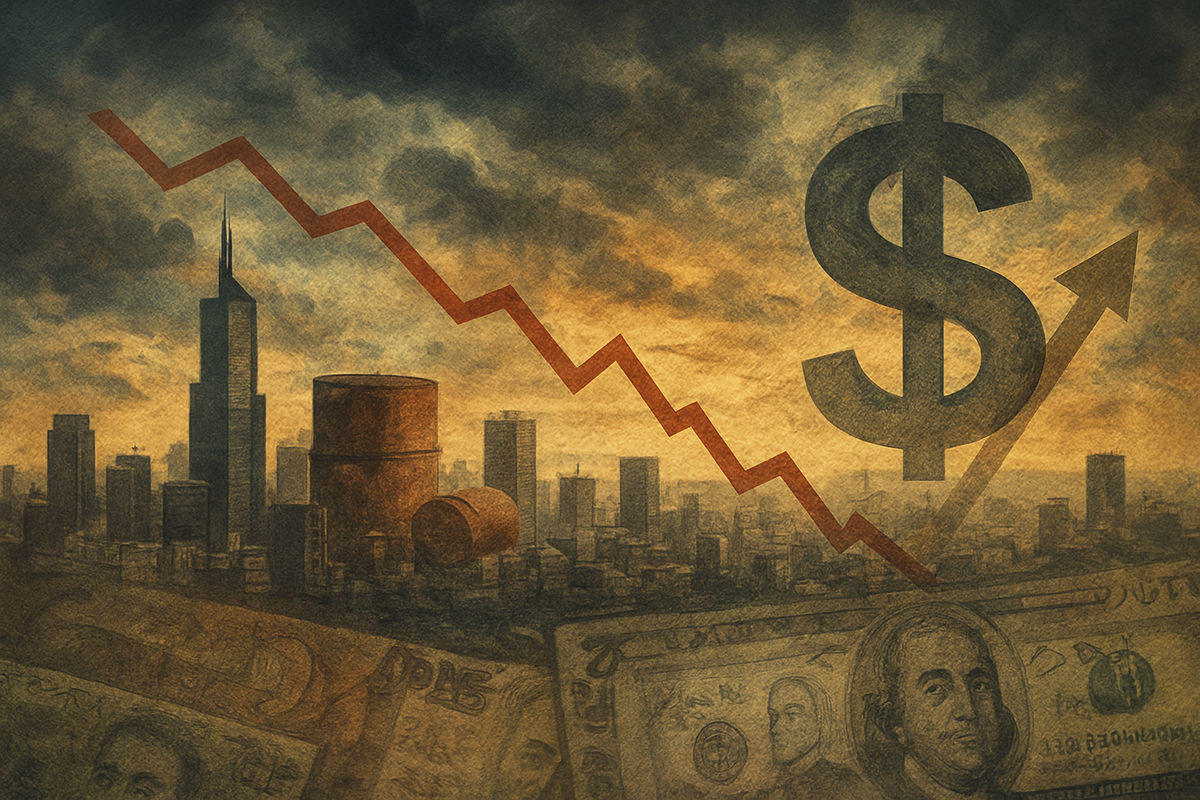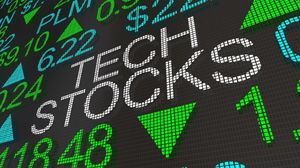
Latin American financial markets have been on a roller coaster ride, experiencing a significant downturn in 2024 before staging a notable rebound in equities throughout 2025. This complex trajectory is largely a consequence of a confluence of global macroeconomic pressures: persistently falling commodity prices, a strengthening US dollar, and the shifting landscape of US interest rate cut expectations. While regional stocks have shown remarkable resilience and recovery from their 2024 lows, currencies continue to grapple with volatility, highlighting the region's inherent sensitivity to external forces.
As of November 21, 2025, the narrative for Latin America is one of cautious optimism tempered by persistent challenges. The initial hopes for substantial US interest rate cuts that characterized early 2024 largely dissipated, leading to a "higher-for-longer" interest rate environment globally. This, combined with a robust US dollar for much of the period and a general downward correction in energy commodity prices, has created a formidable headwind for the region's economies, impacting everything from trade balances to the cost of external debt servicing.
A Turbulent Journey: From Downturn to Resilient Rebound
The year 2024 proved to be particularly challenging for Latin American equities, which collectively emerged as the world's worst-performing region. Indices across major economies like Mexico and Brazil registered substantial declines, reflecting investor apprehension stemming from fiscal risks, institutional erosion, and the narrowing of interest rate differentials with the United States. Regional currencies, including the Brazilian Real and Mexican Peso, bore the brunt of a stronger US dollar and capital outflows, experiencing material depreciation. Energy commodity prices, such as oil and gas, underwent a significant downward correction due to global oversupply and anticipated weaker demand, further complicating the fiscal health of exporting nations.
However, the narrative began to shift dramatically in 2025. The severe underperformance of 2024 created attractive valuations, paving the way for a robust rebound in regional equities. By August 2025, the MSCI EM Latin America index had surged by an impressive 24.5% year-to-date, significantly outperforming broader emerging markets and global benchmarks. Colombia (BVC: COLCAP), Mexico (BMV: MEXBOL), Chile (IPSA: IPSA), Brazil (B3: IBOV), and Peru (BVL: S&P/BVL PERU GEN) all reported strong equity performance, with Colombia even emerging as a top-performing market globally in the first half of the year. This recovery was partly fueled by expectations of more market-friendly political shifts in upcoming elections (2025-2026) and a period of US dollar weakness in early to mid-2025 that offered some respite to LatAm currencies. Despite this equity resurgence, the underlying pressures from a "higher-for-longer" US interest rate environment and volatile commodity markets continue to loom large. Latin American bond issuance in international markets also reached a record high in Q1 2025, indicating renewed investor confidence in some segments.
Key players in this evolving scenario include the US Federal Reserve, whose monetary policy decisions heavily influence global capital flows and the strength of the dollar, and the various Latin American central banks, which have been navigating a delicate balance between taming inflation and supporting economic growth. Brazil's central bank notably initiated a new interest rate hiking cycle in September 2024, continuing into Q2 2025, to combat inflation and bolster its currency, while other regional central banks began easing monetary policies in response to disinflationary trends.
Companies Navigating the Crosscurrents: Winners and Losers
The intricate interplay of commodity prices, currency fluctuations, and interest rate differentials creates distinct winners and losers among public companies in Latin America. Companies heavily reliant on energy commodity exports, such as state-owned oil giants, face significant headwinds from persistently lower prices. For instance, Petróleo Brasileiro S.A. (NYSE: PBR) and Ecopetrol S.A. (NYSE: EC) could see their revenues and profit margins squeezed by falling oil prices, impacting their investment capacities and dividend payouts. These companies are also often major employers and contributors to national budgets, meaning their struggles can have broader economic ripple effects.
Conversely, countries and companies with significant exposure to metals, particularly copper, have found a silver lining. The ongoing global energy transition and urbanization efforts continue to drive demand for industrial metals, keeping prices relatively high. This benefits mining companies like Antofagasta plc (LSE: ANTO) in Chile and Southern Copper Corporation (NYSE: SCCO) in Peru, which could experience robust earnings and provide a buffer against the broader commodity downturn. However, even these firms are not entirely immune to global growth slowdowns or shifts in trade policies.
Companies with substantial dollar-denominated debt are particularly vulnerable to a stronger US dollar, as it increases the cost of servicing their liabilities. This can affect a wide range of sectors, from infrastructure to manufacturing. Conversely, firms that generate significant revenue in US dollars or have diversified their funding sources might be better positioned. The "higher-for-longer" US interest rate environment also means elevated borrowing costs for Latin American companies seeking international financing, potentially stifling investment and expansion plans across the board.
Wider Significance and Historical Context
This period of market volatility in Latin America is not an isolated event but rather fits into broader industry trends and historical patterns. The "higher-for-longer" interest rate paradigm in developed economies, particularly the US, is a significant global trend that tends to divert capital away from emerging markets, increasing their borrowing costs and weakening their currencies. This phenomenon has been observed repeatedly throughout history, where tightening monetary policy in the US has often triggered capital outflows and financial instability in Latin America. The current environment also underscores the region's enduring reliance on commodity exports, making its economic fortunes highly susceptible to global supply-demand dynamics and geopolitical events.
The ripple effects extend beyond direct financial markets. Weaker currencies make imports more expensive, potentially fueling inflation and reducing consumer purchasing power. For governments, falling commodity revenues can exacerbate fiscal deficits, leading to difficult choices between austerity measures and increased borrowing. Regulatory and policy implications are significant, as central banks must carefully calibrate monetary policy to manage inflation without stifling growth, while governments are pressed to implement fiscal reforms and diversify their economies away from commodity dependence. The ongoing US-China trade tensions also add a layer of complexity, impacting global supply chains and demand for raw materials, further influencing Latin American export markets.
Historically, Latin America has experienced cycles of boom and bust tied to commodity prices and global liquidity. The current situation echoes past periods where external shocks—be it oil price crashes or shifts in US monetary policy—have reverberated strongly across the continent. However, the region's central banks, having initiated aggressive rate hikes earlier than many developed nations, have demonstrated a degree of independence and proactive management, attempting to insulate their economies from the worst of the global headwinds.
What Comes Next: Navigating Uncertainty
Looking ahead, the short-term outlook for Latin American markets suggests continued volatility, with a delicate balance between domestic policy actions and external pressures. While the equity rebound in 2025 is encouraging, the underlying challenges of a potentially strong US dollar, fluctuating commodity prices, and elevated global interest rates are unlikely to dissipate quickly. Short-term possibilities include further consolidation in equity markets, with investors keenly watching for signs of sustained disinflation in the US that could pave the way for eventual Federal Reserve rate cuts, which would provide significant relief to the region.
In the long term, strategic pivots towards economic diversification and strengthening fiscal positions will be crucial for Latin American nations. Reducing reliance on a few primary commodity exports and fostering growth in manufacturing, technology, and services could build greater resilience against future external shocks. Market opportunities may emerge from companies with strong domestic demand, those benefiting from intra-regional trade, or those that have successfully hedged their currency and commodity exposures. Challenges will persist for heavily indebted entities and those operating in sectors highly sensitive to global price swings.
Potential scenarios range from a gradual, albeit uneven, recovery if global economic conditions stabilize and commodity prices find a floor, to renewed downturns if the US dollar strengthens further, global growth falters significantly, or political instability within the region escalates. Investors should prepare for a landscape where country-specific factors and company-level fundamentals will play an increasingly important role in differentiating performance.
Comprehensive Wrap-Up: Resilience Amidst Persistent Headwinds
In summary, Latin American markets have demonstrated remarkable resilience in 2025, with equities staging a strong rebound following a challenging 2024. This recovery, however, is set against a backdrop of persistent global headwinds: falling energy commodity prices, a stronger US dollar for much of the period, and a "higher-for-longer" US interest rate environment. These factors continue to exert pressure on regional currencies and elevate the cost of capital, underscoring the region's deep interconnectedness with global macroeconomic trends.
Moving forward, the market will remain highly sensitive to the trajectory of US monetary policy, particularly any definitive signals regarding future interest rate adjustments. Commodity price trends, especially for energy and key industrial metals, will also be critical determinants of economic health for many nations. Investors should closely monitor regional political developments, fiscal reforms, and the ability of central banks to navigate inflationary pressures while supporting growth. The lasting impact of this period will likely be a reinforced understanding of the need for economic diversification and robust fiscal management to mitigate the effects of external shocks.
What investors should watch for in the coming months includes the Federal Reserve's communications on interest rates, global demand indicators for commodities, and the outcomes of upcoming elections and policy decisions within key Latin American economies.
This content is intended for informational purposes only and is not financial advice





